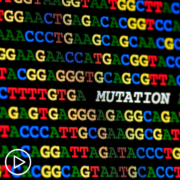How Do Genomic Testing Results Impact Breast Cancer Treatment Options?
How Do Genomic Testing Results Impact Breast Cancer Treatment Options? from Patient Empowerment Network on Vimeo.
Understanding a breast cancer patient’s individual disease is vital to personalizing their care. Dr. Jame Abraham explains how genomic testing results could impact a patient’s treatment path.
Dr. Jame Abraham is the chairman of the Department of Hematology & Medical Oncology at Cleveland Clinic and professor of medicine at Cleveland Clinic Lerner College of Medicine. Learn more about Dr. Abraham.
See More From INSIST! Breast Cancer
Related Resources:

What’s the Difference Between Germline and Somatic Breast Cancer Mutations? |

|

|
Transcript:
Katherine:
Dr. Abraham, how do genomic test results impact treatment options?
Dr. Abraham:
So, let’s just kind of think about the germline mutation. Let’s just say, we do a genetic testing for a patient with a stage two breast cancer. And let’s just say, if the patient has BRCA1 mutation, basically, we are saying, if somebody has a BRCA1 mutation, there’s about a 20 to 40 percent chance of developing contralateral breast cancer, breast cancer on the other side, and then, about 20 to 40 percent chance of developing ovarian cancer.
So, if I’m seeing somebody who is in their 40s or 50s, those who completed their family, completed the family, then, with the mutation, we will talk to them about potential risk reduction surgeries for the other breast.
And then, in addition, we’ll talk about removing the ovaries for prevention of ovarian cancer.
So, that’s one major decision point. And then, let’s just say, with the BRCA mutation, there are new drugs, FDA-approved, what we call as, PARP inhibitors, or olaparib (Lynparza). After completing their chemotherapy and other treatments, we can add a PARP inhibitor or olaparib to their adjuvant treatment. That means, after surgery and chemo, we can add this medicine, for their treatment, for a year.
So, this has tremendous implications for their treatment. And then, let’s just say, if she has other family members, there’s about 50 percent chance that they may have the same.
So, you can probably talk to them about doing the testing for them, and that may influence their screening methods, to see if she has kids, and what 50 percent chance that they can inherit this gene. Again, that can influence how we screen and manage them.
So, let’s just say, if I’m seeing somebody who stage I breast cancer, you’re positive, and then, we do a genomic testing. It’s not exactly somatic, but it’s, still, it’s a genomic testing.
So, we do a genomic testing, such as Oncotype, or MammaPrint – so, again, that’s an early-stage breast cancer – that specifically looked at certain things within the tumor, which are markers for proliferation. So, those tests will help us, again, in a specific subset of patients, ER-positive, HER2-negative, early-stage patients, tests, such as Oncotype and MammaPrint, will help us to identify who will need chemo, or whom we can spare more aggressive treatments like chemo.
And then, in metastatic setting, when we do this testing, we can see certain mutations within the tumor that will allow us to recommend treatments based upon that.









